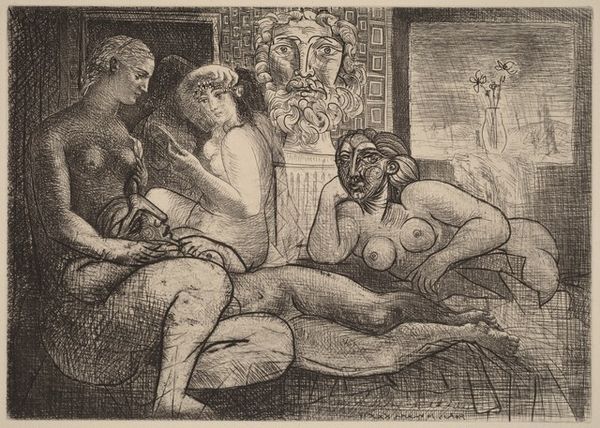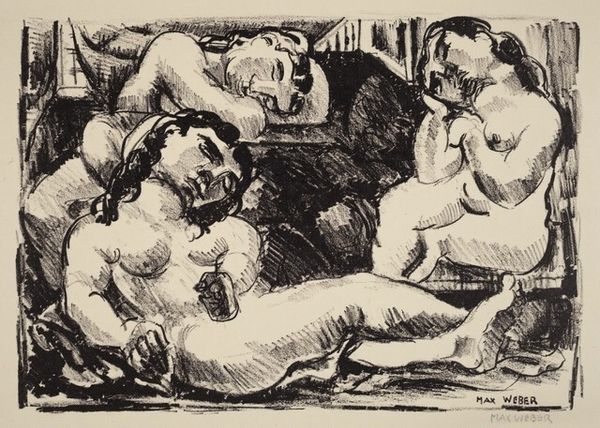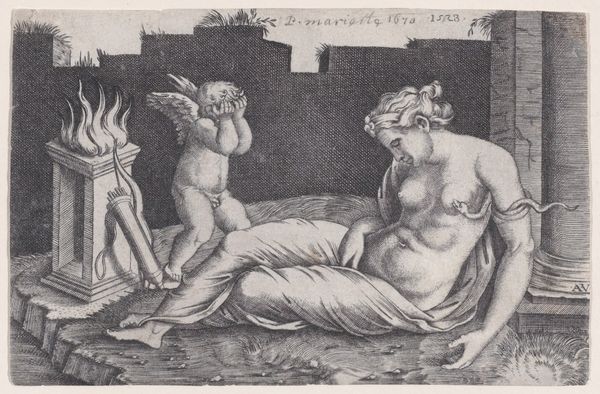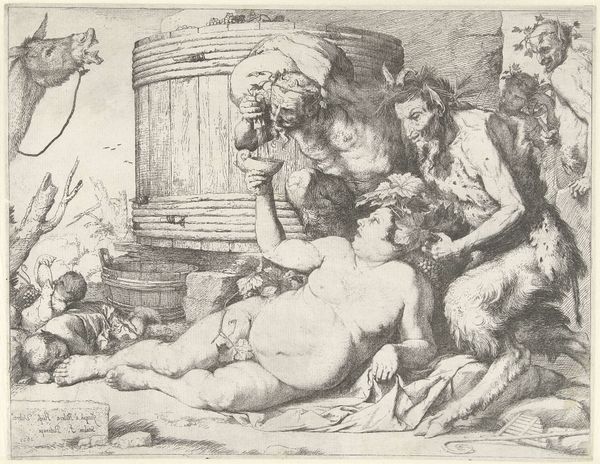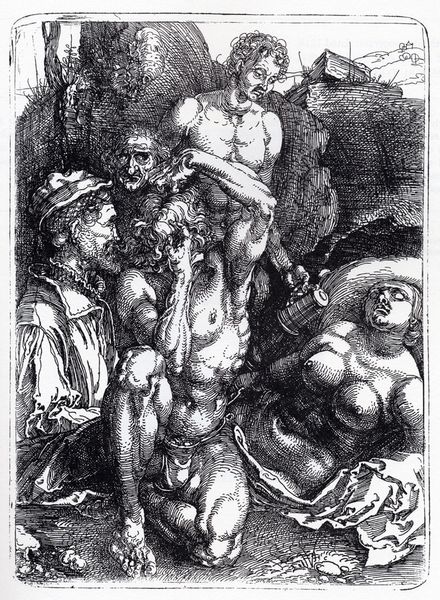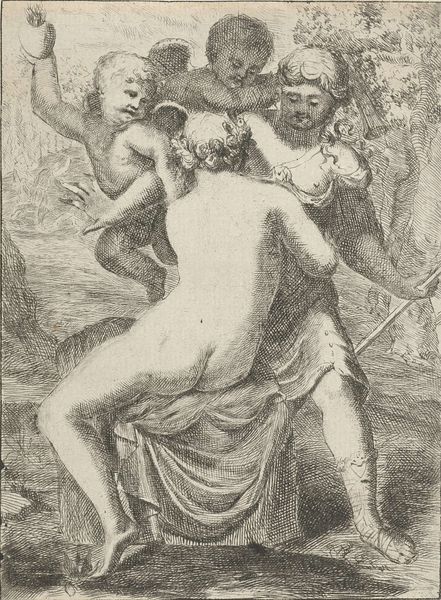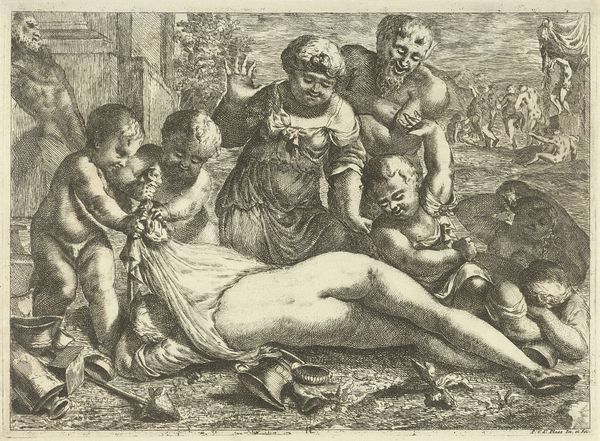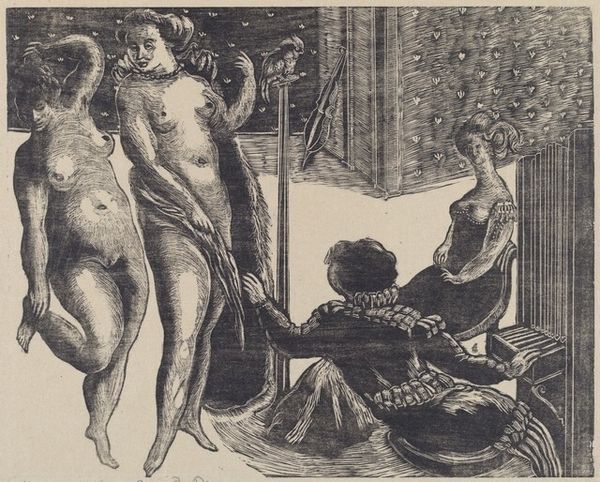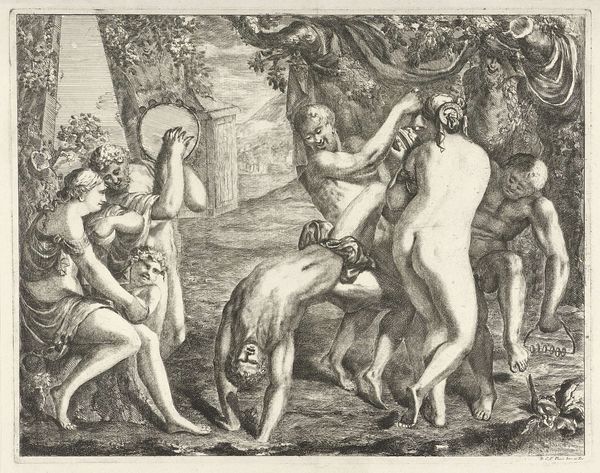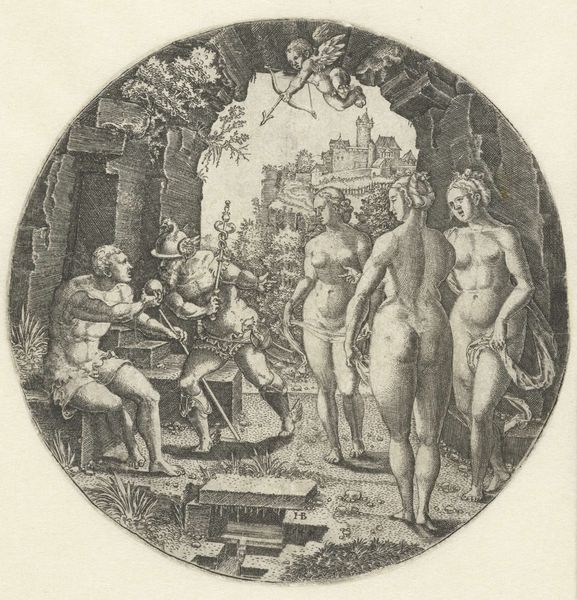
print, ink
#
ink drawing
# print
#
figuration
#
ink
#
genre-painting
#
nude
#
modernism
Dimensions: image: 20.6 × 32.7 cm (8 1/8 × 12 7/8 in.)
Copyright: National Gallery of Art: CC0 1.0
Editor: We're looking at "Mirror," an ink print by Max Weber, likely created sometime between 1928 and 1957. The nude figures seem very classically rendered, yet the composition has a modernist edginess. How do you interpret this work? Curator: I see a fascinating intersection of classical themes and modernist aesthetics, but more importantly, a reflection on the female gaze and self-perception. Considering Weber's social consciousness, particularly regarding immigration and labor rights, I wonder if this "Mirror" serves as a commentary on women's roles and representations in a rapidly changing society. Editor: That's interesting! The figures in the back seem almost voyeuristic, peeking in. Curator: Precisely. Their gaze introduces an element of power dynamics. Are they judging, admiring, or simply observing? And whose gaze matters most here: the viewer's, the figures', or the woman looking in the mirror? These are fundamental questions about gender and representation, echoing throughout art history and contemporary society. Editor: So, beyond the formal qualities of the work, you see it engaging with these bigger societal questions? Curator: Absolutely. Weber, influenced by both European modernism and his Jewish faith, invites us to consider the social and cultural context shaping the artistic expression. It makes us wonder, what societal “mirror” is Weber holding up for us to examine? Editor: I never would have considered these elements. I was initially stuck on its formal appearance and somewhat unsettled mood. Curator: That unsettled feeling might just be Weber’s invitation to engage with complex themes and recognize the social critiques embedded in the art. Editor: I see this print in a completely new way now, understanding its layered meanings about how women are perceived, and perceive themselves, in society. Curator: Precisely! And it showcases how art can challenge conventional perspectives on gender, power, and identity even when depicting seemingly simple subjects.
Comments
No comments
Be the first to comment and join the conversation on the ultimate creative platform.

